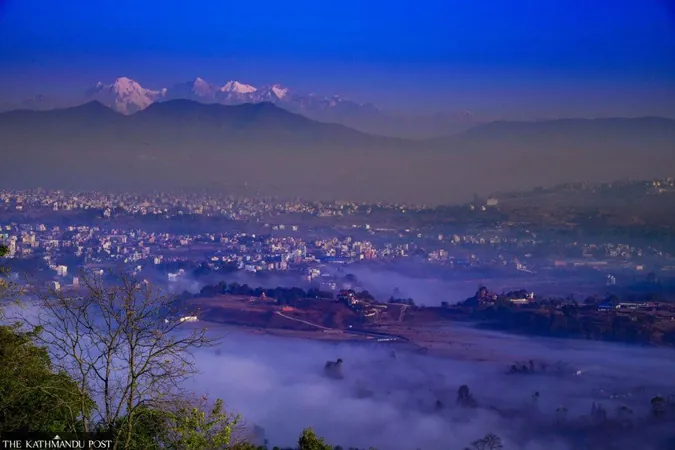
Alarming Pollution Crisis in Kathmandu Valley: Children Pay the Price
2024-12-19
Author: Wei Ling
KATHMANDU – A recent incident in the bustling city of Kathmandu underscores the severe health risks posed by rising pollution levels.
A five-year-old boy was rushed to the emergency ward of Kanti Children’s Hospital suffering from respiratory issues, a dire example of the increasing number of children grappling with similar health challenges. Doctors attributed his condition to an acute lower respiratory tract infection, reduced lung function, and asthma, all exacerbated by the city's perilous air quality.
Expert Insight
Dr. Sumit Agrawal, spokesperson for the hospital, explained that respiratory viruses commonly become active during winter, compounding the effects of ongoing air pollution. "The rise in air pollution levels has further aggravated these respiratory problems," he noted, reflecting a pressing concern voiced by many health professionals.
Children at Risk
Recent research by the Nepal Health Research Council reveals that children in Kathmandu Valley are particularly vulnerable, frequently exposed to harmful air quality while commuting to school. Dr. Megnath Dhimal, the chief researcher, highlighted that those traveling by scooter are especially at risk, adding that many children do not practice adequate safety measures like wearing masks.
Lack of Protection
A sobering statistic from the study indicates that most children are not equipped with proper protection; while KN95 masks can filter 50 to 70 percent of air pollutants, they are rarely used effectively. This lack of awareness among parents and the difficulty children face in wearing masks correctly augmented the vulnerability of young commuters.
Growing Concern
With the dry season commencing, experts predict an exacerbation of air quality issues in densely populated regions such as Kathmandu. Recent rankings by IQ AirVisual, a Swiss firm monitoring air quality globally, have placed Kathmandu among the top ten most polluted cities in the world.
Health Hazards
PM2.5 particles, which are hazardous and can infiltrate the lungs and bloodstream, are a significant component of this pollution crisis. Medical professionals warn that poor air quality can lead to a host of immediate and long-term health problems, including pneumonia, bronchitis, and potentially life-threatening conditions like cancer and heart disease.
Statistics of Concern
Dr. Ganesh Rai, former director of Kanti Children’s Hospital, confirmed a staggering rise in respiratory illnesses among the youth, noting a 50 percent increase in the last decade alone.
Global Perspective
Globally, low- and middle-income countries are disproportionately affected by air pollution, which is linked to over 90 percent of deaths in these regions, according to the World Health Organization. In Nepal, this toxic air is not only linked to immediate health hazards but is also contributing to a significant reduction in life expectancy. A report by the Air Quality Life Index revealed that pollution is shortening Nepali lives by an average of five years—more detrimental than the effects of tobacco smoke or high blood pressure.
Call to Action
The local populace is called to action; protective measures like wearing masks, washing hands, and avoiding crowded areas can mitigate the spread of infections exacerbated by pollution. As the situation grows direr, the urgent need for collective awareness and responsiveness becomes increasingly clear. The health of the next generation hangs in the balance, and immediate steps are necessary to combat this silent but deadly crisis.

 Brasil (PT)
Brasil (PT)
 Canada (EN)
Canada (EN)
 Chile (ES)
Chile (ES)
 España (ES)
España (ES)
 France (FR)
France (FR)
 Hong Kong (EN)
Hong Kong (EN)
 Italia (IT)
Italia (IT)
 日本 (JA)
日本 (JA)
 Magyarország (HU)
Magyarország (HU)
 Norge (NO)
Norge (NO)
 Polska (PL)
Polska (PL)
 Schweiz (DE)
Schweiz (DE)
 Singapore (EN)
Singapore (EN)
 Sverige (SV)
Sverige (SV)
 Suomi (FI)
Suomi (FI)
 Türkiye (TR)
Türkiye (TR)